This mid-19th century window had been known to Linda since she was a child. It's condition had always caused her concern. In 2013 Rab and Linda removed the window for conservation. | 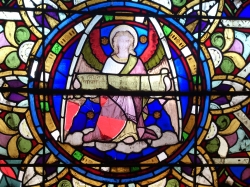 |
The condition of the window was much worse than could be seen from ground level. The paint was almost washed away completely. The lead was paper thin. Previous attempts to patch it or make it watertight were disastrous. | 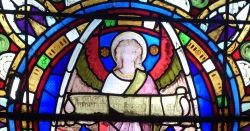 |
All of the painting was almost illegible. Several areas of previously broken glass had been covered with clear perspex and coloured plastic film, stuck on with globs of silicon glue. The original lime mortar had long since been covered over with copious amounts of Portland cement. | 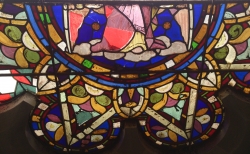 |
The condition of the lead was extremely thin, broken, damaged, and bulging. There had been no strength in this window for many years. It had been held together by Portland cement, silicon, and divine intervention. | 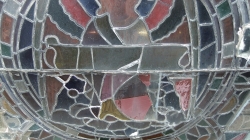 |
To further compound the problem, a layer of varnish had been painted on the outside to waterproof the glass. After years of sunlight, this had baked and crizzled onto the glass surface. Coloured plastic film, stuck on with silicon, was permenantly baked and had damaged the outside surface of the glass. | 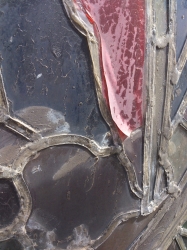 |
Before we did anything, we made two complete rubbings of the window in situ. We knew the window would fall apart as soon as we started removing it. This was, an exact template (and a spare copy) could be made for later use. We fixed the rubbings onto strong card to make them more durable. | 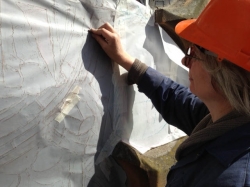 |
The paint, on the angel's face, had completely disappeared. We were dealing with a ghost angel. | 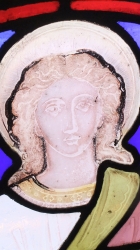 |
We found that by manipulating the face in Photoshop, a semblance of the original face could be identified. |  |
A lot of discussion and consideration the took place as to the best option for reconstructing the images on the glass. We considered back-painting, plating, re-firing, and re-painting with new glass. The overall size of the window and increased weight involved with plating became a factor. The condition of the stonework also became an issue. We finally decided our best option was to archive the original glass, and to completely cut and repaint ALL of the painted glass, but keep the original unpainted coloured glass. All of the original glass was cleaned, boxed, labelled and given to the church for safe keeping / study. | 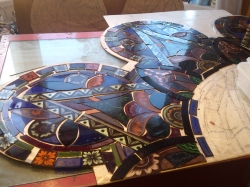 |
The overall size of the window was a re-leading problem. The original had not fitted well into the stonework, and we saw real problems trying to re-install it. We decided to re-lead it in sections, that tightly fitted together on the bench, which could be tied together inside and outside in situ, to the existing robust ferramenta. |  |
The original rubbing was essential, in enabling us to correctly place each segment of the window at the correct angle. Each piece was loosely tied together to allow for final adjustments. |  |
It was a huge relief when the bottom section was in place, and secure within the stonework. | 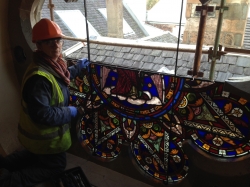 |
Almost there. | 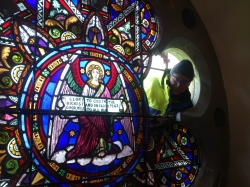 |
The final window, after installation. Hopefully it will last another 150 years - at least. The congregation were delighted with the result. | 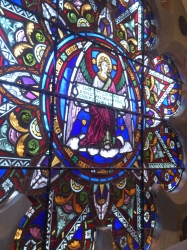 |